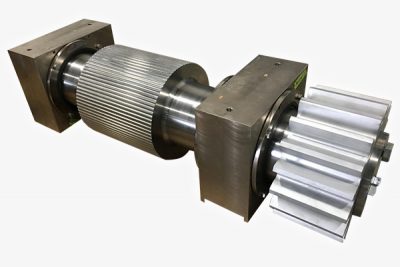
IPA roll compactors and mills are durable machines built for long lasting run time. However, all machines require maintenance and often replacing of parts to continue producing optimum product quality and throughputs. Production rates can unknowingly decline over time from a process issue or deteriorating parts.Whether you are running a compactor 24/7 or producing batches of material, it is important to keep your equipment at peak performance. Below you will find guidelines of commonly occurring problems and suggested resolutions.
These process conditions also apply for competitor machines, such as the Fitzpatrick Chilsonator & Fitzmill. Should you have a maintenance question that is not list below or require PLC software/hardware upgrades, please reach out to IPA and we can problem solve with you.
| Maintenance / Process Issues Encountered | Spare Part(s) Required / Suggested Solutions |
| Uneven Roll Gap |
|
| Cannot achieve roll gap set point |
|
| Final product contains excessive fines |
|
| Final product contains excessive coarse |
|
| Roll pressure fluctuation (minor) typical fluctuation is normally in the range of 50 PSIG |
|
| Roll pressure fluctuation (major) |
|
| Overloading of Roll Motor OR Excessive compact or granulationtemperature |
|
Common Spare Parts for 24/7 Operation
When running a machine 24/7 it is common to have the following replacement parts on hand in order to minimize downtime. IPA can work with you to set up an individual preventative maintenance plan to keep certain parts on hand for immediate shipment.
- Top Seals
- Side Seals
- Roll Seals
- Hydraulic Cylinders
- Gaskets/Packing
For abrasive materials, also consider the following:
- Horizontal Feed Screws
- Drop in Roll Assembly
- Mill blades
- Vertical Feed Screws
- Roll Bearings
